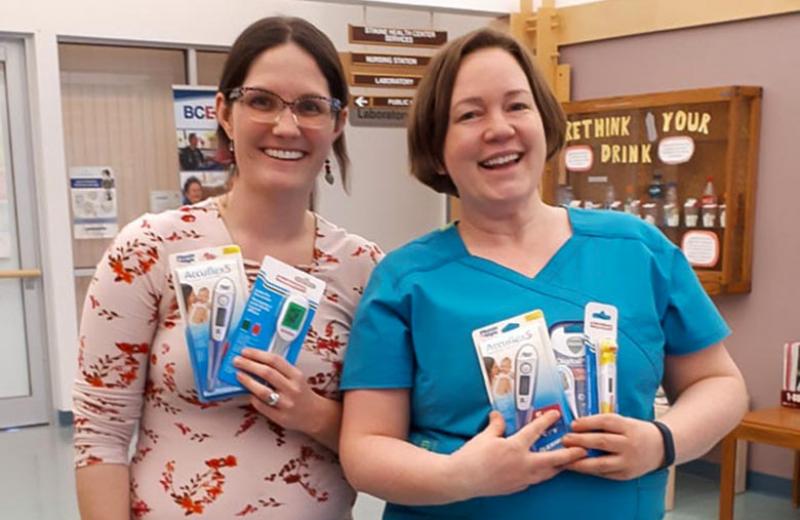When someone goes to the emergency room with a cold or a mild fever, they often end up using some of the time and care needed for people with more urgent health concerns.
Anna Fritch, a nurse in Dease Lake, noticed this trend and decided to do something about it. Her goal was to cut down on the number of unnecessary emergency room visits.
She realized that many people who come to the emergency room don’t have basic health information on how to treat minor illnesses at home.
“I thought, ‘What do I know about taking care of a cold?’ I learned what to do from my mother as a child and how she self-treated us at home,” Anna says.
She realized one problem is that people don’t know where to get health information. Another problem is that people call emergency saying that their child has a fever, but when asked what their temperature is, parents respond that they don’t own a thermometer.
Anna works closely with the pregnancy outreach coordinator in Dease Lake, Amy Bolton. They meet a few times a month to collaborate and share information. When Anna mentioned the issues to Amy, Amy was immediately on board, offering to use some of her budget to buy thermometers.
Anna and Amy now wanted to work out how to give out the thermometers, but also educate people at the same time. They tried to do monthly pre-natal education sessions, but even though Dease Lake is a small town, the turnout wasn’t great.
The next step was to share the information with Dease Lake residents. At a community health fair, Anna provided thermometers, HealthLink BC info on how to take temperatures (children and adults), Northern Health info on treating a child’s fever at home, and a pamphlet from BC Children’s Hospital.
Now, Anna has the same information in her office, along with the thermometers. When a family or an elder comes to the emergency room, she takes the opportunity to educate them about fevers and gives them a thermometer. She teaches them what a fever represents, when to be worried about it, and what to do.
This education “makes a fever less frightening and puts a bit more agency into the hands of families,” says Anna. “People tend to think the moment they’re unwell, there’s nothing they can do.”
“It’s a willingness to partner and support people, but it’s also ‘here’s the tool you need and how to use it.’ These are the situations in which you can help yourself,” says Anna.
Anna says that now, when people call the emergency room to say they’re coming in with a feverish child, they can attach a number to their concern because they’re using a thermometer.
“There’s a difference between hot to the touch and clinically having a fever,” Anna says. “When I did the teachings, I tried to emphasize that ‘I’m giving you the thermometer because when you call me, I want us to be talking about the same thing.’”
Anna and her nursing colleagues are still working on increasing people’s confidence to care for family members themselves. But now, they can objectively measure temperature, which gives Anna and the other nursing staff a talking point to use when they call or come into emergency.
This is a great example of how a simple tool and a little education can help reduce emergency room visits.














Comments